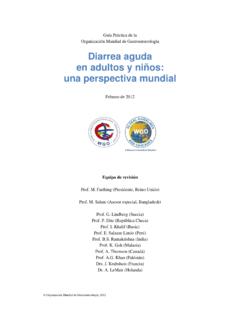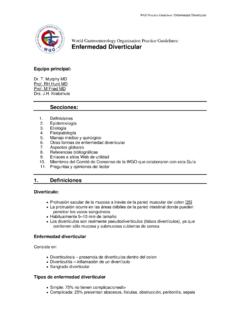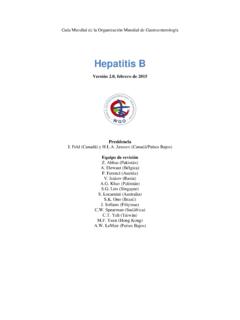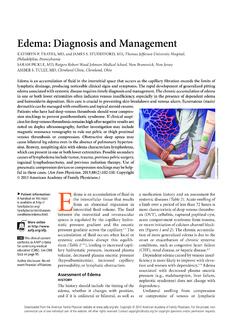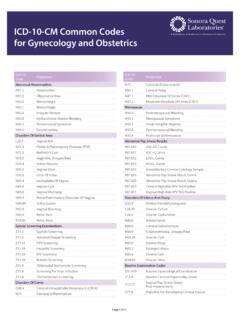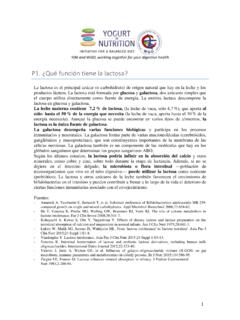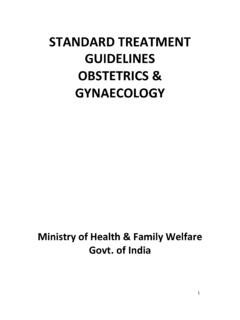Transcription of Q1. What is the role of lactose?
1 YINI and WGO, working together for supporting you with your lactose intolerance Q1. What is the role of lactose? Lactose is the principal sugar (or carbohydrate) naturally found in milk and dairy. Lactose is composed of glucose and galactose, two simpler sugars used as energy directly by our body. Lactase, an enzyme, splits lactose into glucose and galactose. Human milk contains of lactose (only of lactose in cow's milk), which provides up to 50% of an infant's energy needs (cow milk provides up to 30% of an infant's energy needs).
2 Although glucose could be found in several types of foods, lactose is the only source of galactose. Galactose has various biological functions and serves in neural and immunological processes. Galactose is a component of several macromolecules (cerebrosides, gangliosides and mucoproteins), which are important constituents of nerve cells membrane. Galactose is also a component of the molecules present on blood cells that determine the ABO blood types. According to more recent studies, lactose may play a role in the absorption of calcium and other minerals such as copper and zinc, especially during infancy.
3 Moreover, if it is not digested in the small intestine, lactose may be used by the intestinal microbiota (the microorganism population that lives in the digestive tract) as a nutrient (prebiotic). Lactose and other milk sugars also promote the growth of bifidobacteria in the gut and may play a life-long role in countering the aging-associated decline of some immune functions. Sources: - Amaretti A, Tamburini E, Bernardi T, et al. Substrate preference of Bifidobacterium adolescentis MB. 239: compared growth on single and mixed carbohydrates.
4 Appl Microbiol Biotechnol 2006;73:654-62. - He T, Venema K, Priebe MG, Welling GW, Brummer RJ, Vonk RJ. The role of colonic metabolism in lactose intolerance. Eur J Clin Invest 2008;38:541-7. - Kobayashi A, Kawai S, Obe Y, Nagashima Y. Effects of dietary lactose and lactase preparation on the intestinal absorption of calcium and magnesium in normal infants. Am J Clin Nutr 1975;28:681-3. - Lukito W, Malik SG, Surono IS, Wahlqvist ML. From 'lactose intolerance' to 'lactose nutrition'. Asia Pac J Clin Nutr 2015;24 Suppl 1:S1-8.
5 - Vandenplas Y. Lactose intolerance. Asia Pac J Clin Nutr 2015;24 Suppl 1:S9-13. - Venema K. Intestinal fermentation of lactose and prebiotic lactose derivatives, including human milk oligosaccharides. International Dairy Journal 2012;22:123-40. - Vulevic J, Juric A, Walton GE, et al. Influence of galacto-oligosaccharide mixture (B-GOS) on gut microbiota, immune parameters and metabonomics in elderly persons. Br J Nutr 2015;114:586-95. - Ziegler EE, Fomon SJ. Lactose enhances mineral absorption in infancy. J Pediatr Gastroenterol Nutr 1983;2:288-94.
6 1. Q2. What is the lactose maldigestion? Lactose maldigestion is the difficulty to digest lactose, a type of sugar naturally found in milk and dairy food. Lactose maldigestion concerns most people in the world. It is due to the normal reduction of the activity of lactase, the enzyme that transforms lactose into glucose and galactose, both simpler sugars used by our body for energy and various functions. Lactose maldigestion appears after weaning, when the activity of lactase begins to naturally decline. For most individuals, this lactose maldigestion produces little or no symptoms.
7 Lactose maldigestion varies between different populations and on whether dairy products are consumed during adulthood. Lactase activity decline is more common in people of Asian, African, South American, Southern European, and Australian Aboriginal heritage than in people of Northern European (Scandinavia, the British Islands and Germany) descent. Sources: - Adolfsson O, Meydani SN, Russell RM. Yogurt and gut function. Am J Clin Nutr 2004;80:245-56. - Szilagyi A. Adult lactose digestion status and effects on disease.
8 Can J Gastroenterol Hepatol 2015;29:149-56. 2. Q3. What is the lactose intolerance? Lactose intolerance is the inability to digest lactose that results in intestinal discomfort such as bloating, diarrhea, and gas. However, these symptoms are not specific to lactose intolerance and can be associated with psychological factors, such as stress and emotional trauma, or intestinal dysfunctions occurring, for example, during infection or malnutrition. It is important to remind that lactose intolerance is not a disease but a condition.
9 It means that it is not deleterious for your health. It is also important that lactose intolerance shall not be confused with cow's milk protein allergy. Sources: - Crittenden RG, Bennett LE. Cow's milk allergy: a complex disorder. J Am Coll Nutr 2005;24:582S-91S. Luyt D, Ball H, Makwana N, et al. BSACI guideline for the diagnosis and management of cow's milk allergy. Clin Exp Allergy 2014;44:642-72. - Misselwitz B, Pohl D, Fruhauf H, Fried M, Vavricka SR, Fox M. Lactose malabsorption and intolerance: pathogenesis, diagnosis and treatment.
10 United European Gastroenterol J 2013;1:151-9. 3. Q4. What is the difference between lactose maldigestion and lactose intolerance? There is a difference between these two situations. In both cases (lactose maldigestion and intolerance), only a fraction of lactose is digested. Non-digested lactose enters the colon. For some individuals, the bacterial fermentation of non-digested lactose in the colon results in one or many symptoms such as bloating, diarrhea, and flatulence. This is called lactose intolerance.





